loki100
Posts: 10920
Joined: 10/20/2012
From: Utlima Thule
Status: offline

|
6 December 1941
This update is based on the on-map situation at the end of turn 24
Background
By 5 October the Soviet position at Leningrad rapidly deteriorated. Not only had the Germans regained control of the west bank of the Volkhov but a massive attack had breached the Neva with German motorised troops across the river. Soviet resistance prevented any attempt to reinforce this bridgehead as Leningrad Front prepared to strike back. Equally the Germans made steady progress towards Moscow reaching a line from Kaluga to Borodino. In the Ukraine, Kharkov and the Dnepr bend all fell to the Germans as their spearheads approached Stalino.
12 October brought heavy rains [1] and some slowing of the German offensive. Leningrad Front managed to regain the line of the Neva after heavy reinforcements [2]. However, Western Front was thrown back all along its defensive line with Kaluga and Borodino lost [3]. Despite the crisis in the Ukraine (where Kursk and Stalino were lost) Stavka pulled the few reserves from SW Front to help defend Moscow [4].
19 October saw ground conditions worsen and the German offensive stall with their spearheads 60 miles from Moscow. This respite continued in the next week and Kalinin Front managed a limited offensive around Torzhok to force the Germans to redeploy mobile units to back up their infantry on that sector.
2 November saw the first snows of winter across most of the front apart from at Leningrad where the rains persisted. The Torzhok offensive and a steady build of Western Front stopped the direct German offensive towards Moscow but to the south the Soviet defences collapsed. Byransk Front sought to defend Tula with a scattering of weak formations and a combination of Central and SW Fronts held a line from Lipetsk to Voronezh as German troops approached Rostov. In the Crimea the Germans pushed back the Soviet screen and advanced towards the well defended Sevastopol.
9 November saw the first direct assault on Leningrad but the situation at Moscow improved. The need to eliminate the salient created by Kalinin Front diverted at least one Panzer Group even as Western Front rapidly built up. To the south of the Oka, the Germans renewed their attacks towards Tula while they advanced at will on the southern sector.
16 November saw the first blizzards of winter. At Moscow German troops maintained their offensive, surrounding Kalinin, capturing Tula and pushing along the north bank of the Oka. However, Stavka was finally able to start mustering a reserve [5] on this sector rather than commit the freshly arriving Siberian forces into the battle. In the south, logistics rather than Soviet resistance limited the German advance but both Rostov and Sevastopol fought off initial assaults.
23 November saw a fresh crisis at Leningrad as the Germans forced the line of the Neva again and pushed back NW Front both on the Volkhov and around Lake Ilmen. At Moscow, the strengthening Soviet lines were enough to slow the Germans to a crawl as the blizzards produced deep snow drifts. In the south, Rostov fell and Axis troops pushed over the lower Don.
Early December
Apart from some final gains at Leningrad, it was clear the German offensive was over for 1941. I’ll discuss the winter rules (and the more general weather rules) in the usual second post, here the focus is on the options. The weather this turn mostly changed to snow rather than blizzards.
Clearly, for the first time in the game, I choose the tempo and location of operations. But I don’t have much to do this with. The more I managed to keep out of combat in November (so those units built up their CPP), the more useful units I have to hand. I need high CPP in part for the obvious combat bonus but also for the secondary MP rules. Essentially in determining MP, high CPP can help offset the often low admin scores of many Soviet commanders. Given that deep snow costs more MP than most other conditions, I need high MP if I am to sustain any sort of offensive. That in turn means an attacking army will become exhausted after 2-3 weeks of action.
Now so far, I’ve been living hand to mouth with manpower reserves and administrative point allocations. I’ve just received a large (if untrained) cadre of manpower and that will help refit the numerous rifle divisions destroyed so far. In a few turns, I will receive an allocation of extra administrative points.
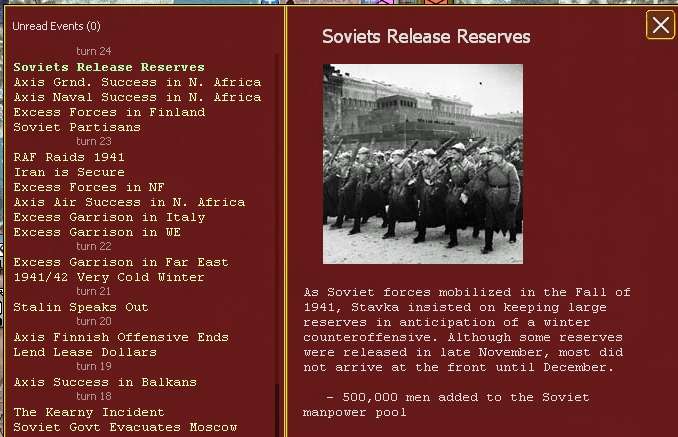
That will allow me to start reshaping my army. I gain the ability to build two Guards Rifle Corps and a number of Cavalry Corps in the next turn. Unlike in WiTE1, tank brigades are an off-map Support Unit so ideal to allocate to the Cavalry formations. Rifle brigades can be on or off-map, allocating 3 to a Gds Rifle Corp can transform a powerful unit into something that can break down a defensive strong point (and then needs to refit). There are plenty of other changes to WiTE1 but its worth noting I have two NKPS rail repair HQs which gives me a bit of flexibility over rail repair (or – probably better – they can help with my logistics).
To put this into context, I have 325 on map divisions (2 are Guards, one of which is unready). 3 of these are depleted and 44 unready. The 30 unready or depleted rifle divisions average 5,000 men and 70 guns each. The 189 that are ready average 9,000 men and 140 guns each. So at a crude estimate, to bring them up to their TOE would need 350,000 men and 55,000 guns (i.e. take most of my recent reinforcements). An artillery shortage is going to be a problem well into 1943.
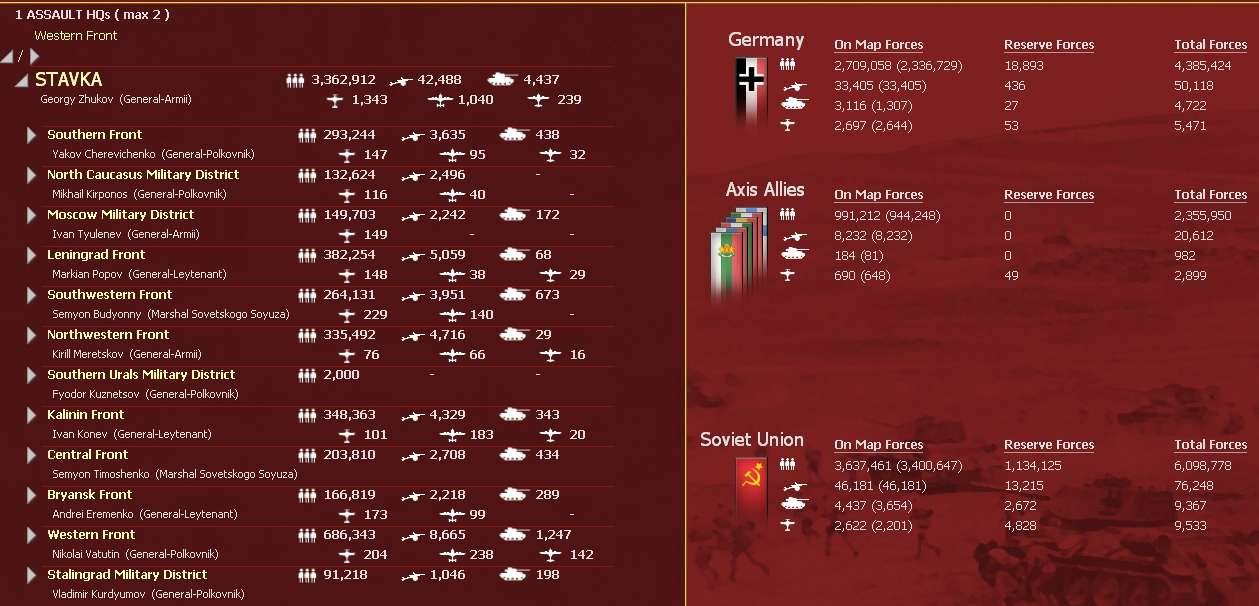
So time to plan what is feasible.
If I can, I want to ease the pressure on Leningrad as ideally I want a land connection which will mean I can replace the worn down divisions now defending the city. Linked to that I want to regain the dual track rail and Kalinin-Rzhev. Kalinin Front itself is too strung out to achieve much.
However, being pragmatic, I am not going to do much around Leningrad itself unless the AI weakens its forces:
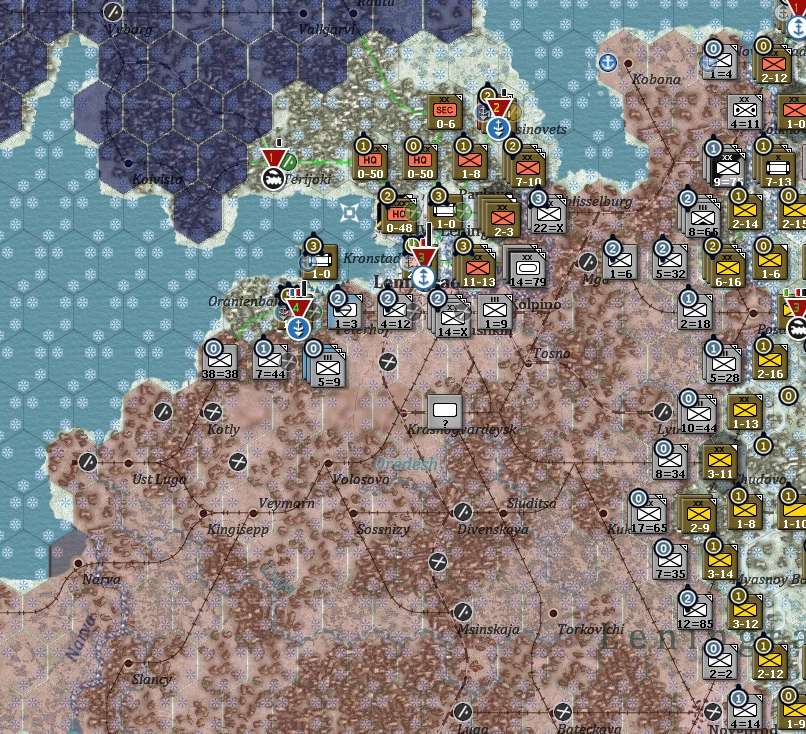
Which makes attacking along the Kalinin Front critical, not just for the local gains but to dislocate the wider German defensive lines.
One of Western Front's more decent armies (24) is well placed to help. Western Front is particularly important as it is the only Assault Front I have (which increases the speed at which I gain CPP).
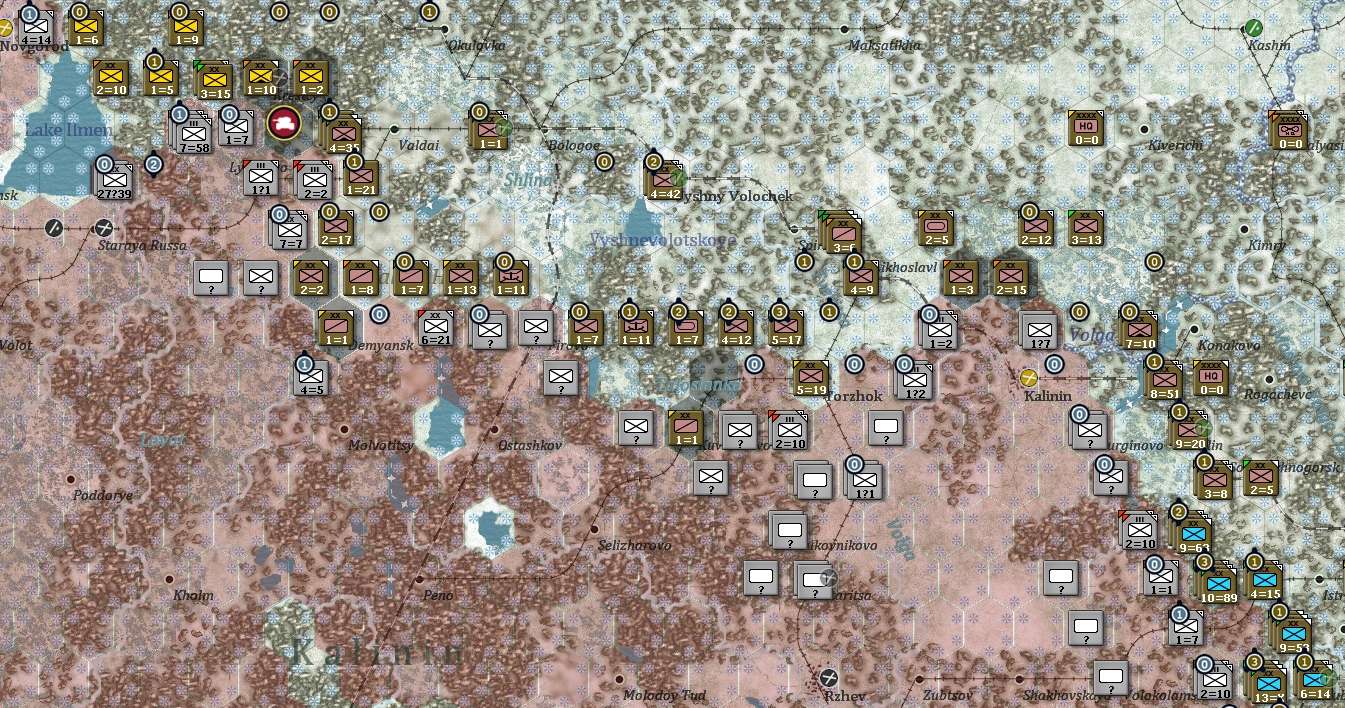
Not that impressive but its as good as I have. 13 and 30 A (West) and 43 A (Bryansk) have some capacity (and 43 A will get at least 2 cavalry corps). Basically I want Borodino-Kaluga-Tula mainly to give me depth for the summer of 1942.
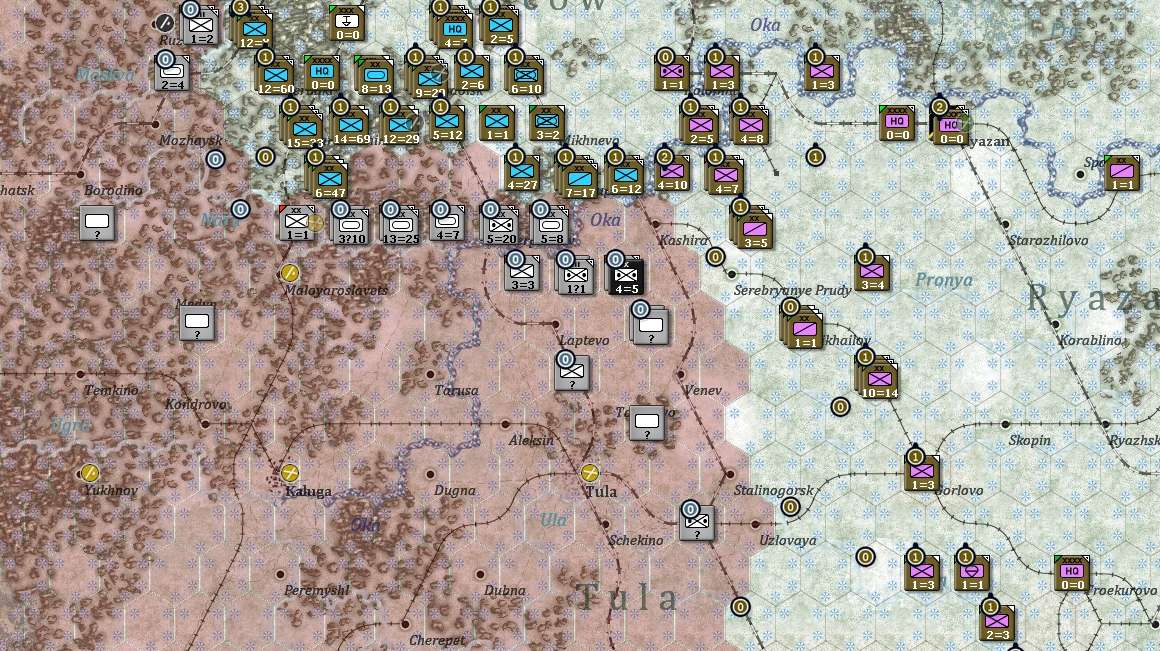
Central and SW Fronts have some capacity but there is no real target, anything I take I'll lose. So my goals are to force the Germans into an open retreat, see if I can win a few battles.
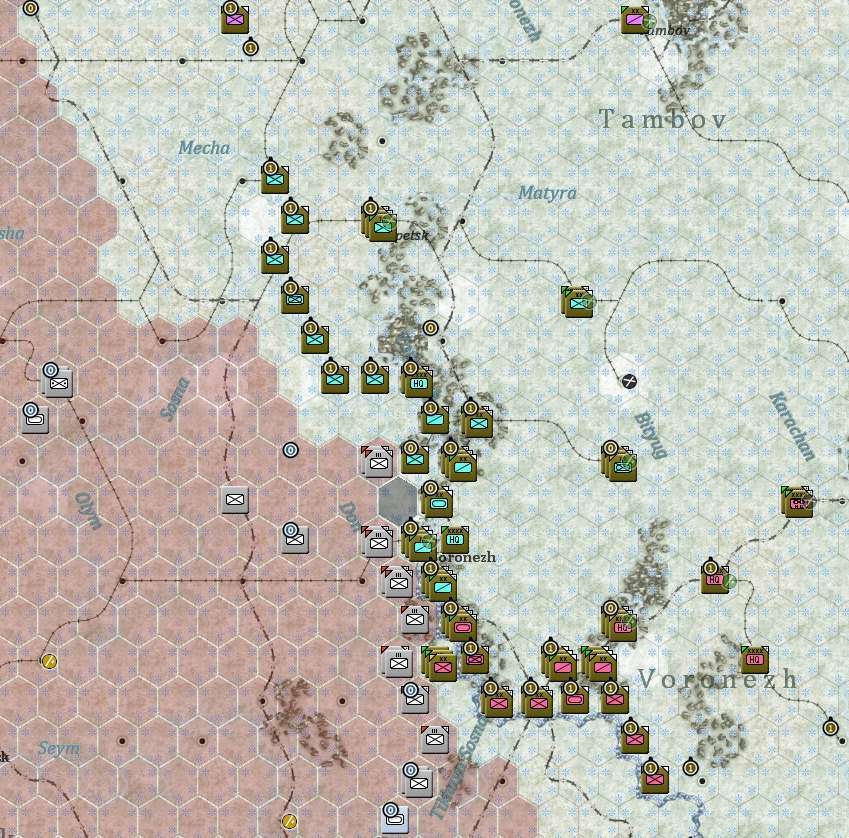
To the south, Southern Front and Stalingrad MD should make some gains it is going to be ephemeral. I want Rostov back, I can't see any encirclement, so again its going to be opportunistic. The arrivals from Iran will help build up here.
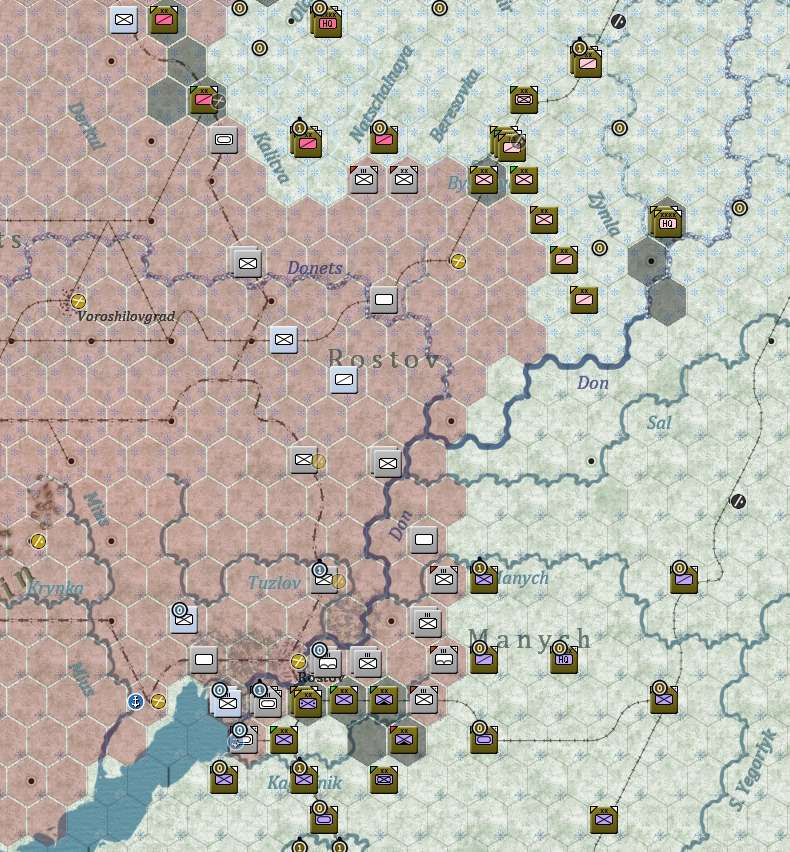
Finally the Crimea. The AI did not push towards Kerch and Sevastopol is safe till the Spring.
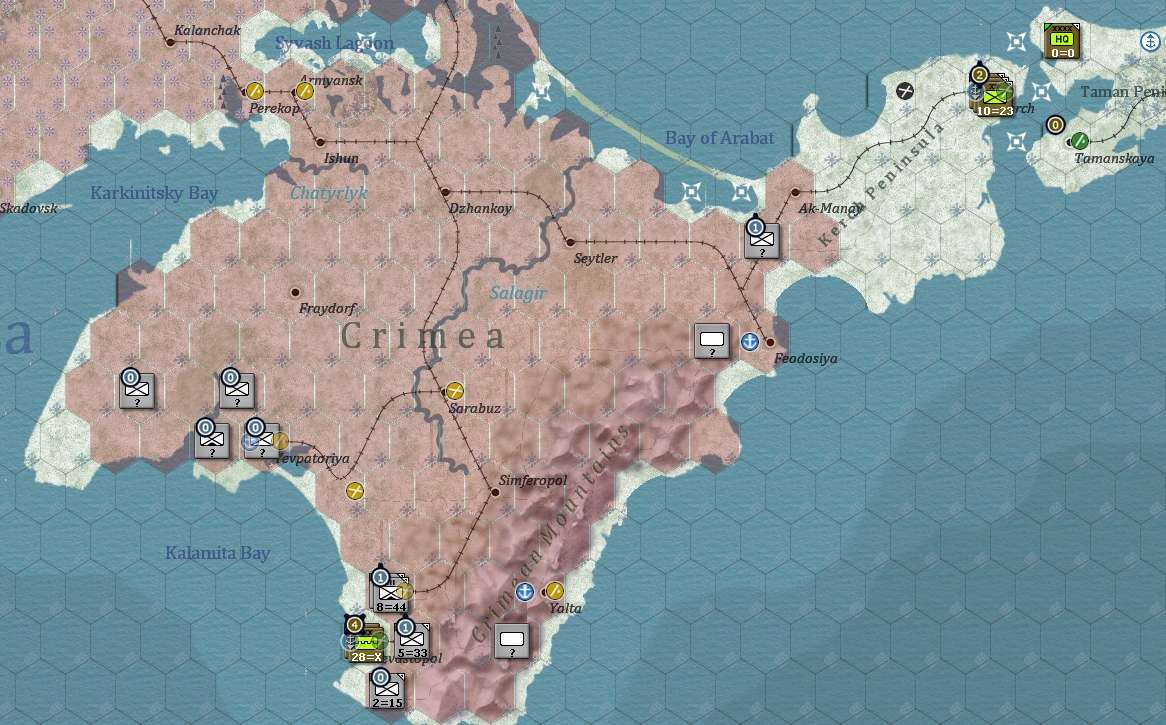
And the VP situation. Well the AI is safe from a Sudden Loss.
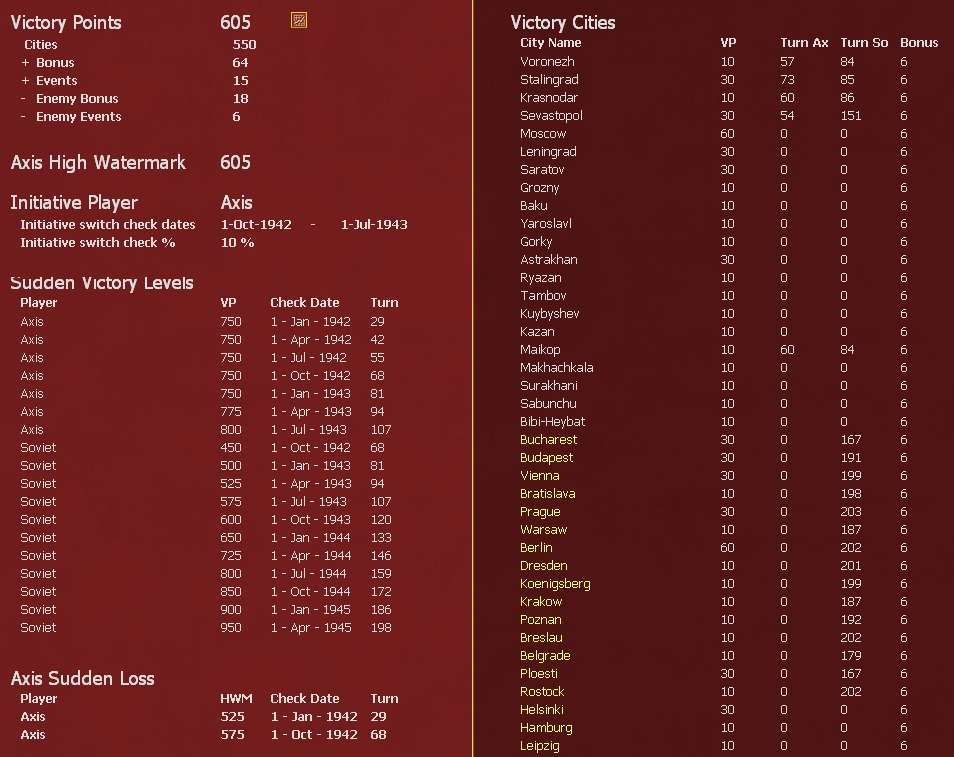
[1] but due to the new weather rules, only light mud
[2] This takes at least 3 turns to manage but I sent almost all my available rifle brigades to reinforce the local Rifle Divisions and my few effective artillery formations – as it turned out, just in time.
[3] As ever, its not just being forced to retreat, this reduced about 15 divisions to unready or depleted status.
[4] Basically I have no combat ready formations left in the Ukraine. Notionally there are 193 Rifle Divisions on map and of these 55 are depleted or unready, of the rest, they average 8,500 men and 110 guns each.
[5] The Siberian formations arrive with nil CPP but a much better TOE. I finally found the spare admin pts to place Western Front on 'assault' status so this radically improves their CPP gain (if they stay out of combat). As already stressed, high CPP is not just an offensive combat tool, it feeds into better movement capability (so the ability to move and attack in deep snow for example).
_____________________________
|
 Printable Version
Printable Version

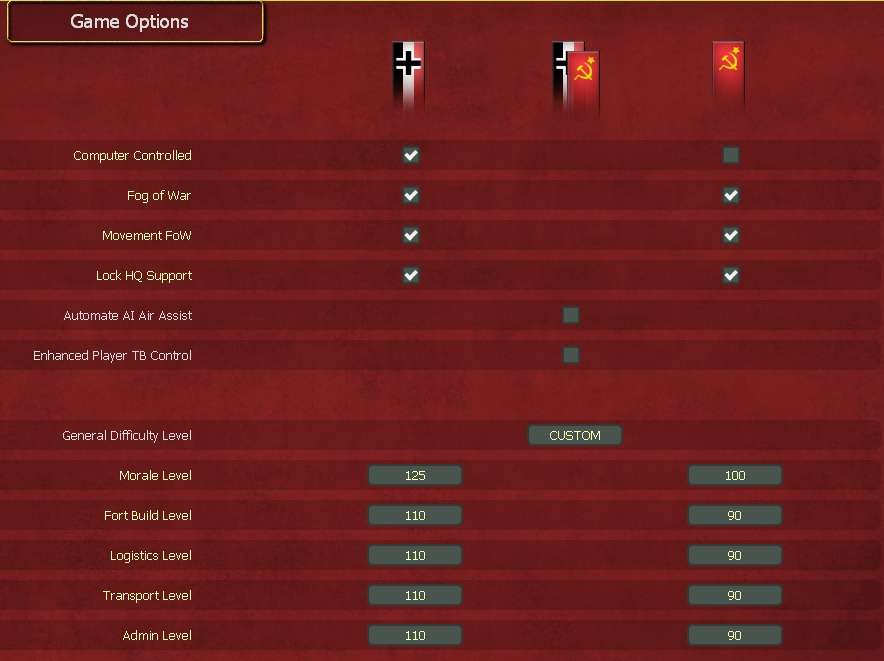





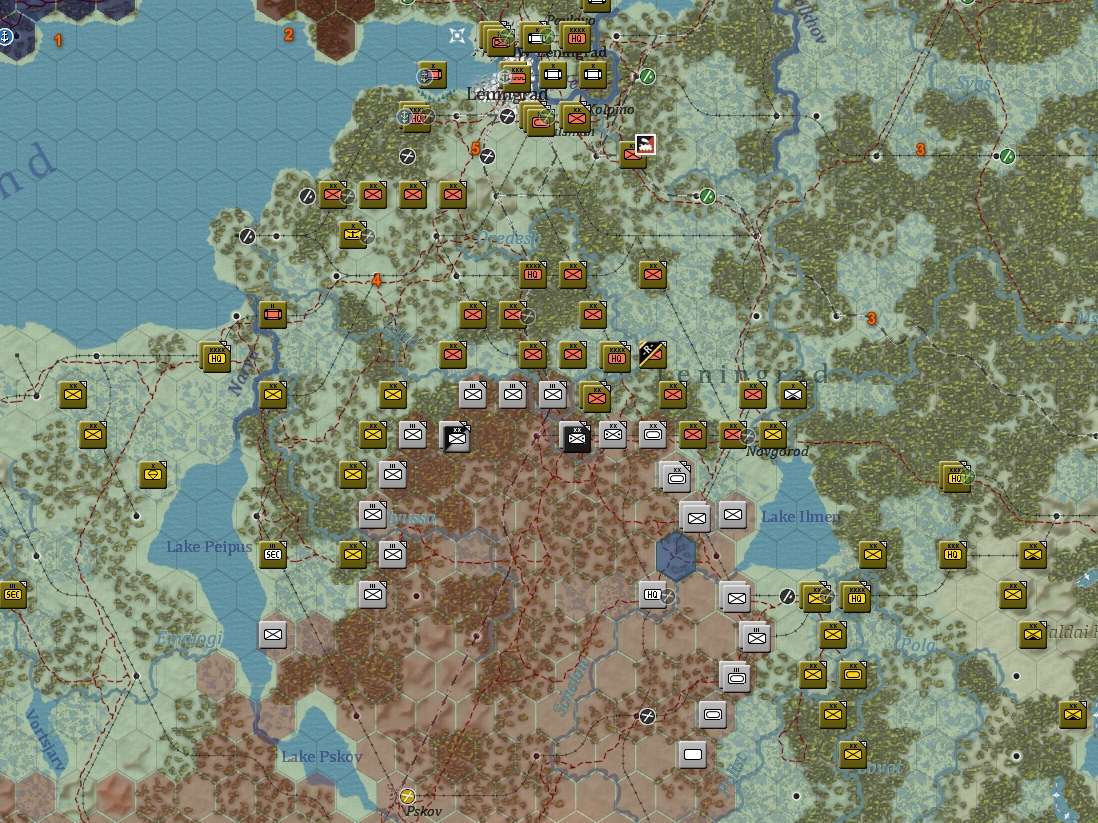
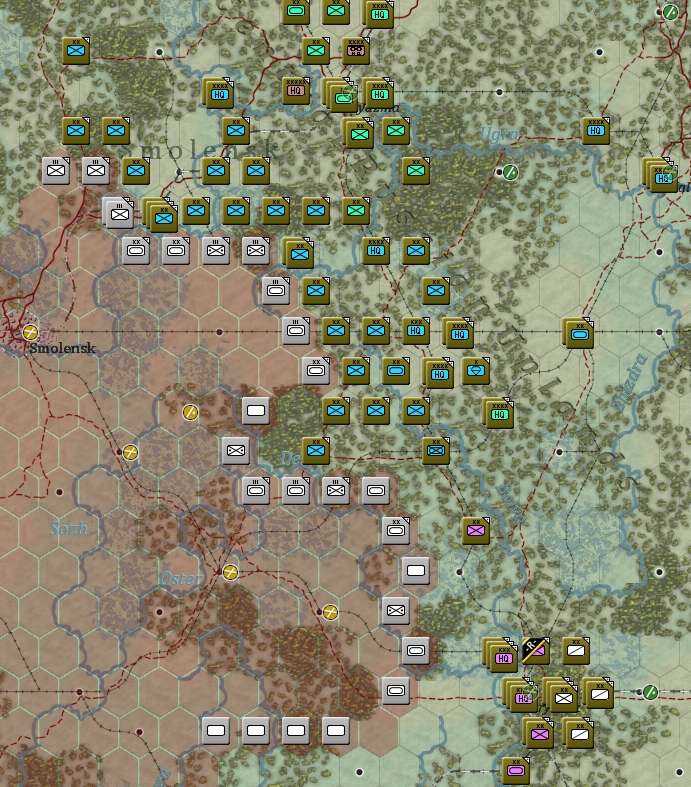
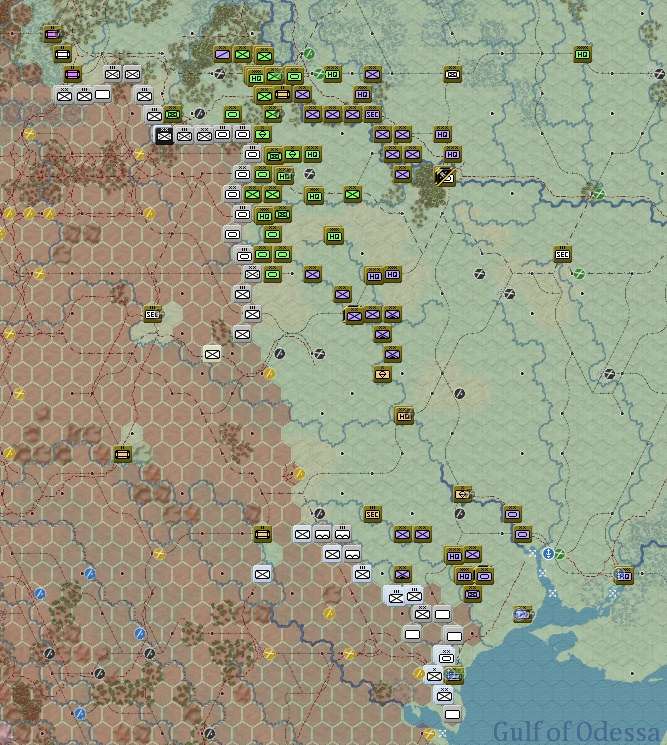
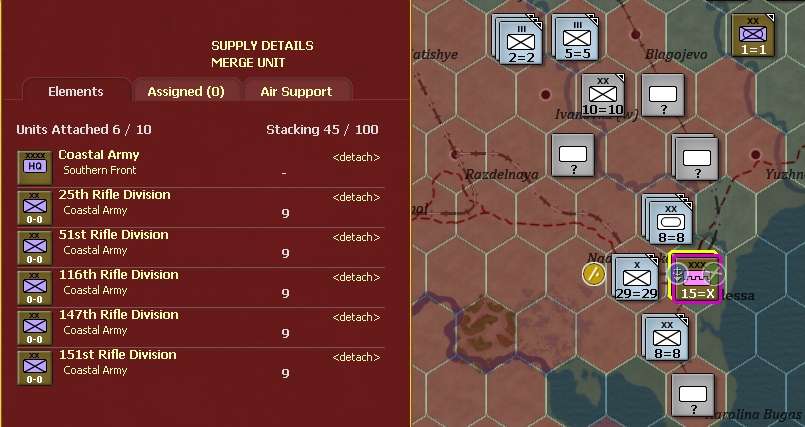
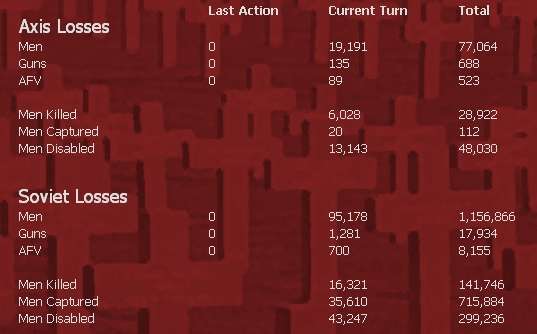
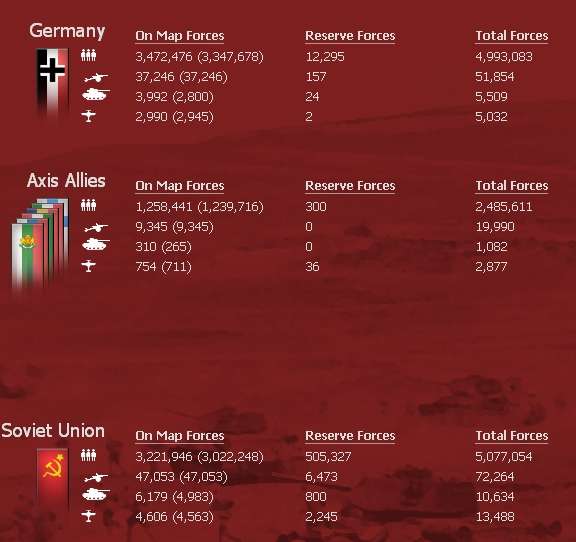
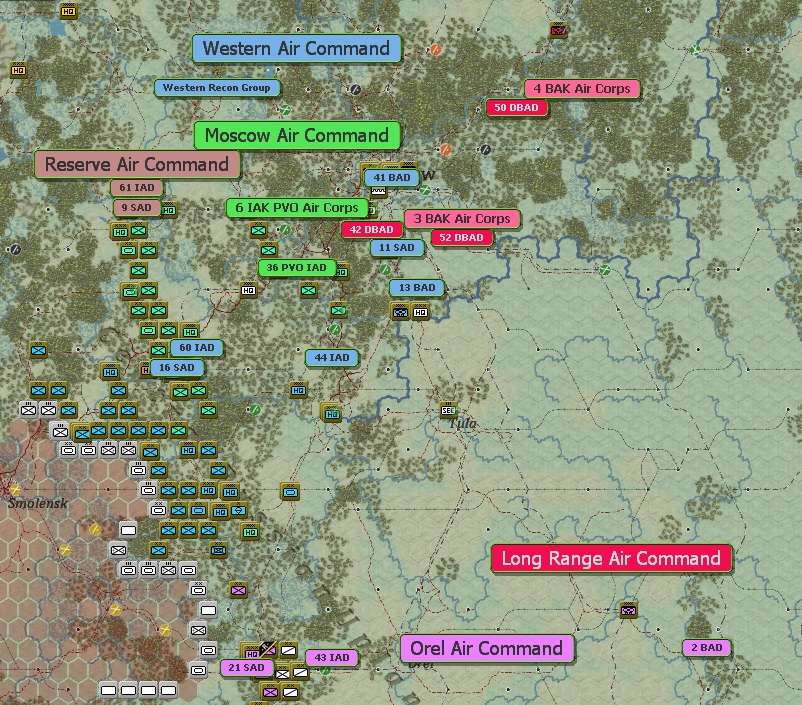
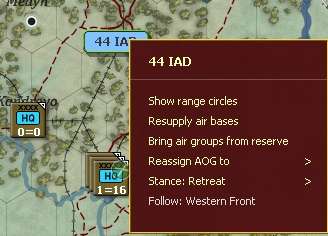



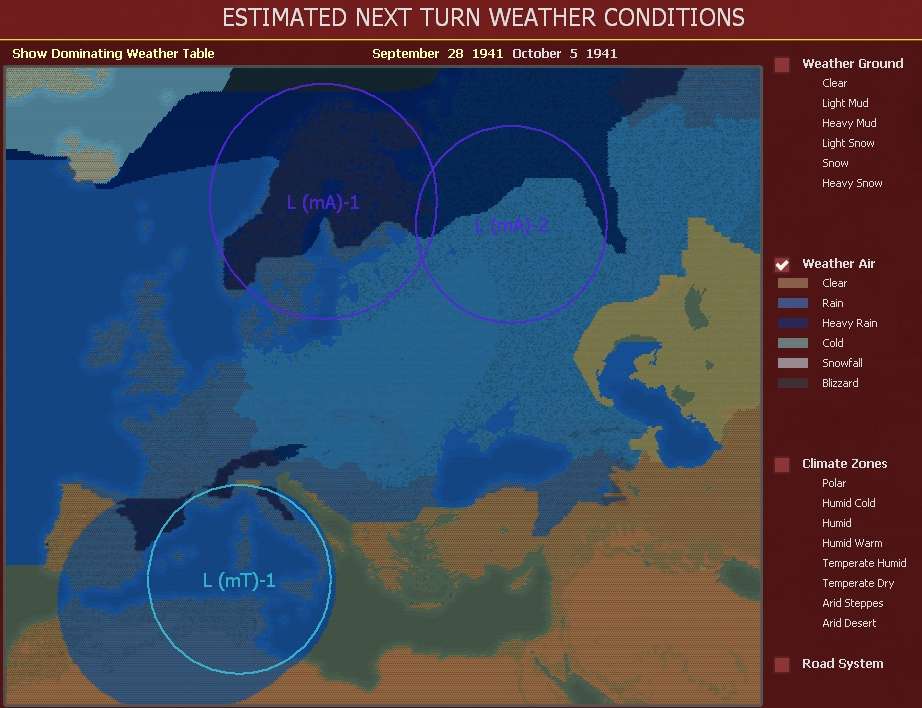
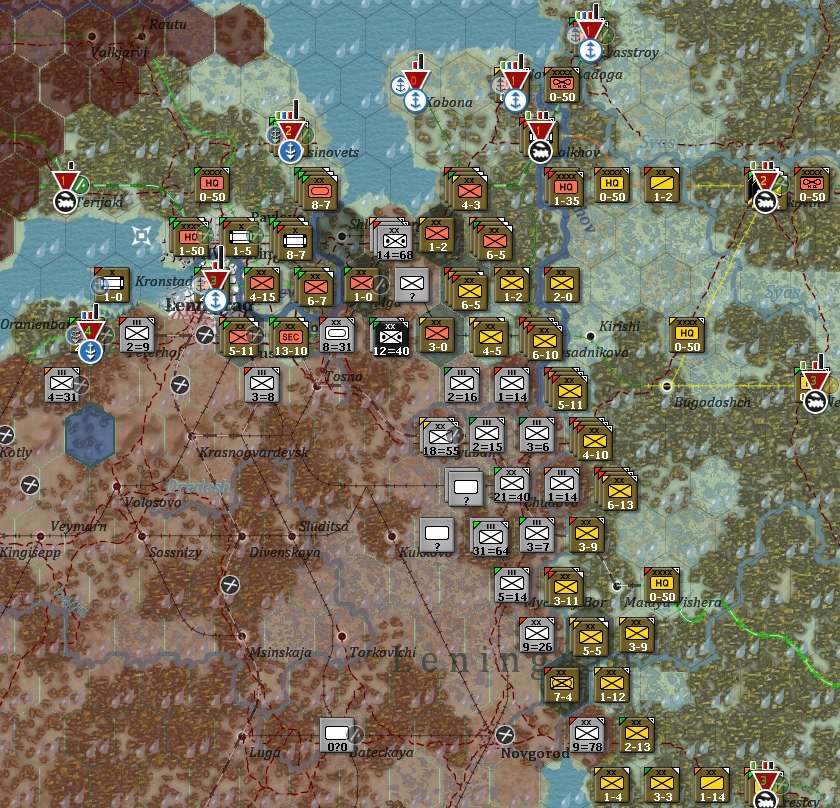
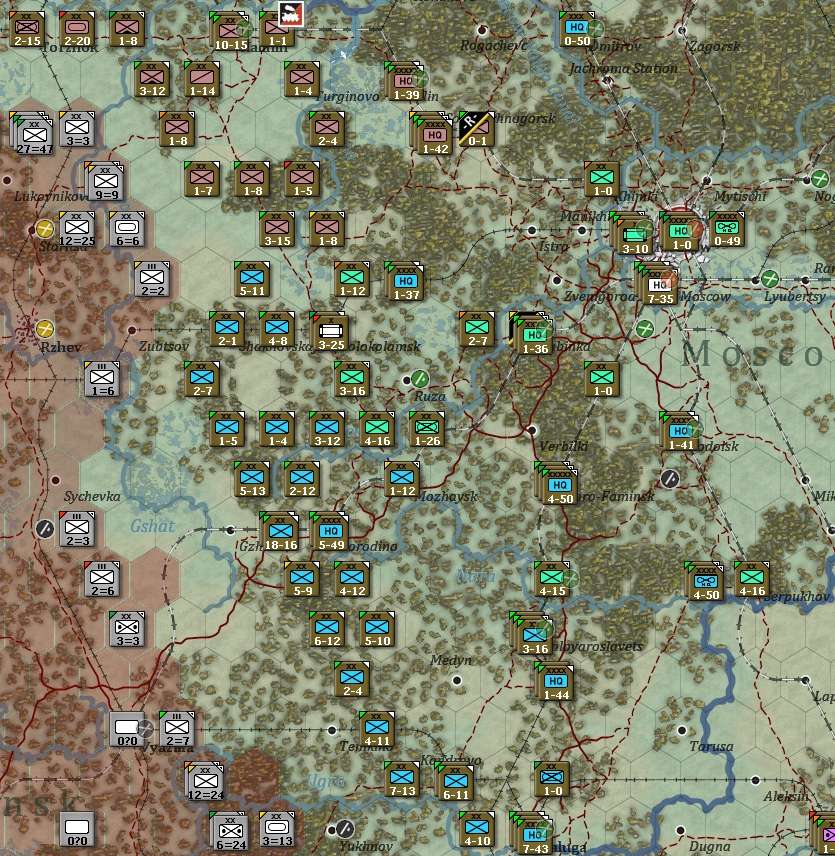
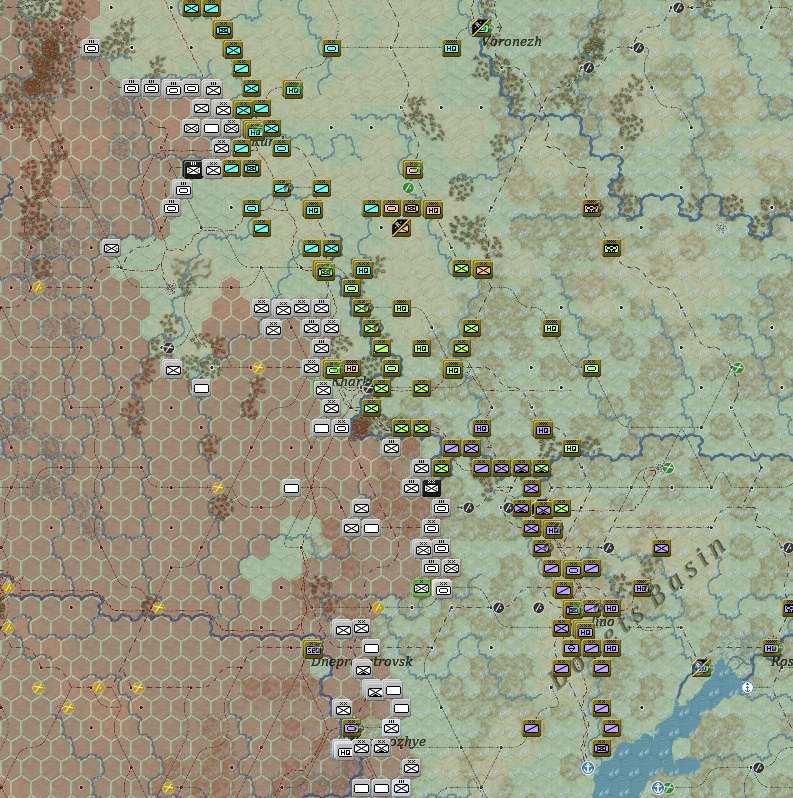


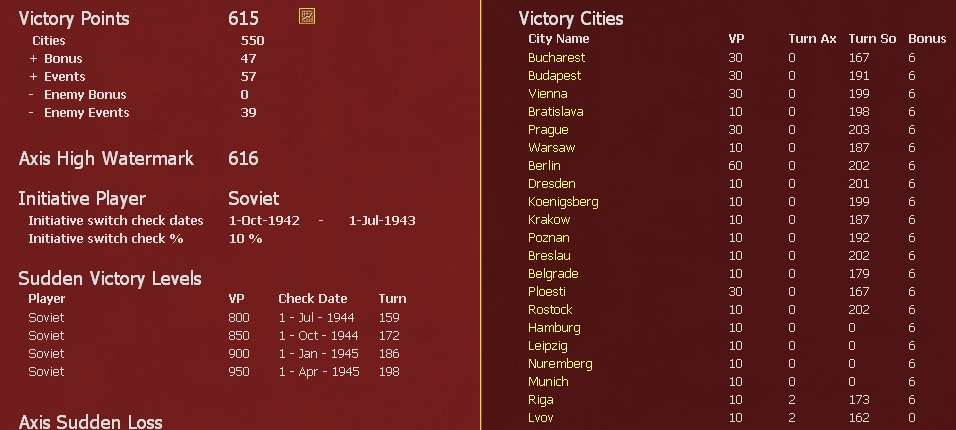













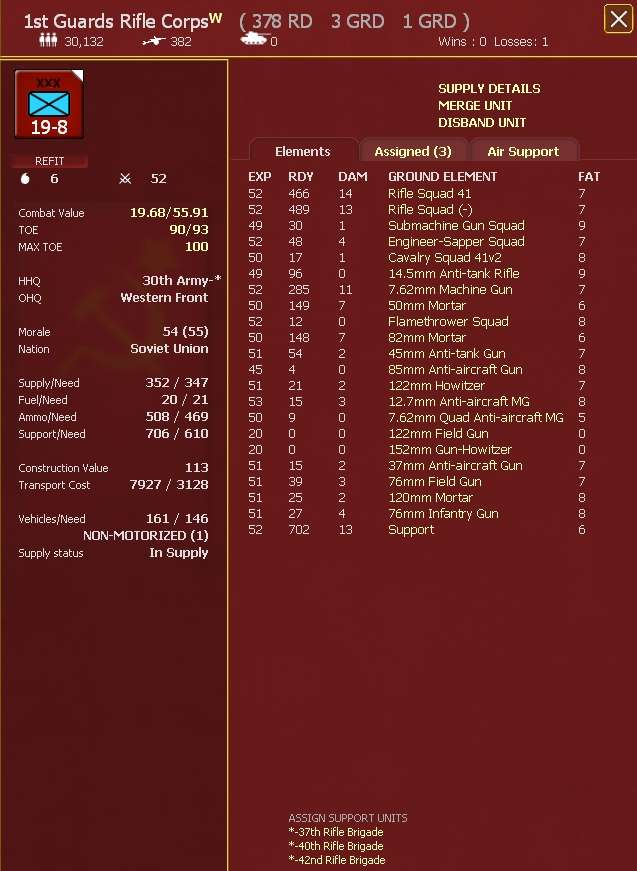


 New Messages
New Messages No New Messages
No New Messages Hot Topic w/ New Messages
Hot Topic w/ New Messages Hot Topic w/o New Messages
Hot Topic w/o New Messages Locked w/ New Messages
Locked w/ New Messages Locked w/o New Messages
Locked w/o New Messages Post New Thread
Post New Thread